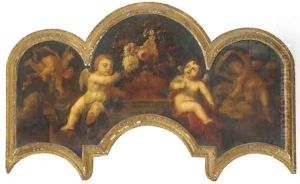Peter Casteels Paintings
Peter Casteels III was a Flemish painter born in Antwerp in 1684. He was part of a family of painters and was the son of Peter Casteels II, who was also an artist. Little is known about his early life and training, but it is believed that he may have studied under his father or another master in Antwerp before moving to England around 1708.
Casteels is primarily known for his paintings of birds, game pieces, and flower still lifes, which were popular in England at the time. In addition to his still lifes, he also produced a series of prints of birds, which contributed to his reputation. His work was characterized by a delicate handling of paint and a keen eye for detail, which helped to capture the texture of feathers and the subtle gradations of color in flower petals.
After settling in England, Casteels became involved with a group of artists who were working on a publication called 'The Natural History of Carolina, Florida and the Bahama Islands' by Mark Catesby, an English naturalist. Casteels was responsible for etching some of the plates for this work, which was one of the first major works on the natural history of North America and the Caribbean.
Throughout his career, Casteels continued to produce artworks that found favor with collectors and patrons. His paintings were often commissioned by the aristocracy, who valued the elegance and decorative quality of his compositions. Despite his success as an artist, he also ventured into the world of business, running a china shop in London for a period.
Peter Casteels III died in Richmond, Surrey, in 1749. His legacy is that of a skilled painter of still lifes who contributed to the dissemination of natural history knowledge through his art. His works can be found in various collections and museums, and they continue to be appreciated for their beauty and historical value.
